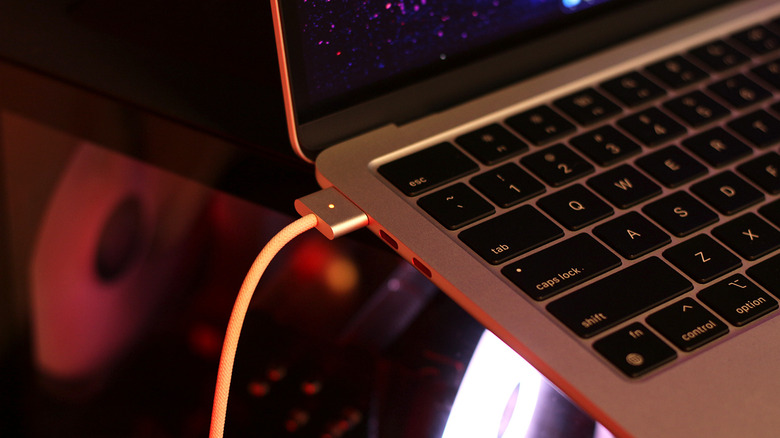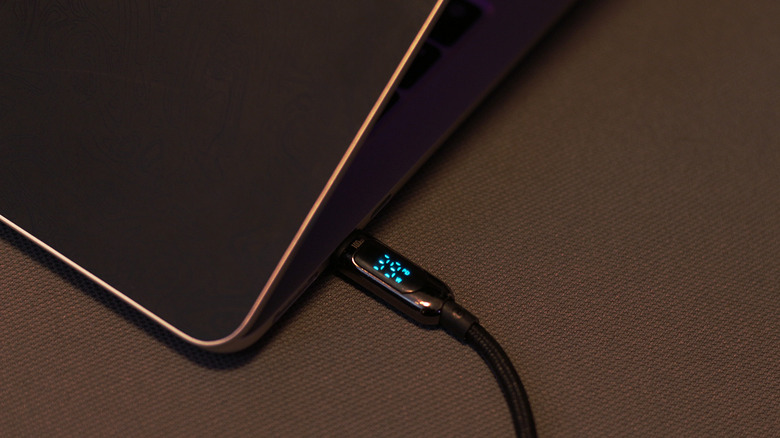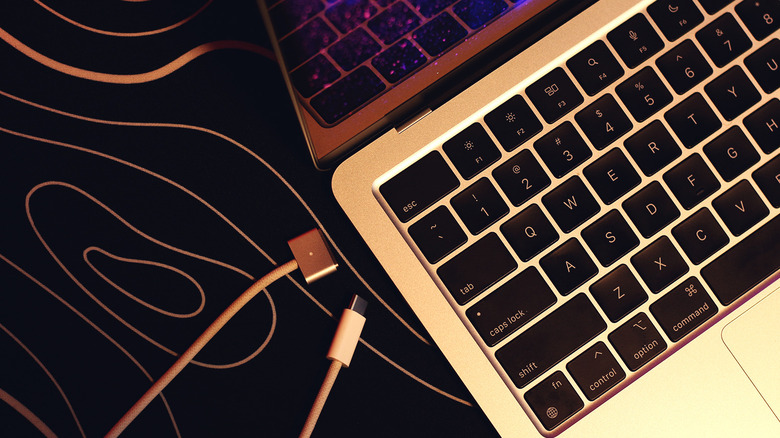MagSafe Or USB-C: Which Port Should You Use To Charge Your MacBook?
MacBooks have evolved into sleek, high-octane, and reliable computers ever since Apple switched to its in-house M-series silicon. In our review of the MacBook Air M4, we highlighted the value that the entry-level offering is, especially now that the base model ships with twice the amount of RAM for a hundred dollars less than the previous generation. MacBooks with M-series chips have also proven to be exceptionally good at battery management, lasting hours on end with medium to high intensity work.
When it's time to top up, you can rely on either the MagSafe connector or a traditional USB-C cable. This means that, depending on your MacBook model, you could have up to four ports that can be used to charge the laptop. Apple already ships a charging adapter and an accompanying USB-C to MagSafe charging cable in the box — but the charging speeds on MacBooks are something the company is persistently unclear about.
As a one-size-fits-all solution, sticking with a high wattage power adapter and the included USB-C to MagSafe charging cable will always yield the fastest charging speed that your MacBook is capable of. This number, however, depends on which MacBook model you own and how many watts the charging adapter can supply to it.
How fast do MacBooks charge?
Unlike other manufacturers, Apple doesn't explicitly mention the maximum charging speed of its devices. Instead, it lists a selection of first-party charging adapters and cables that can "fast charge" a given MacBook model. Apple's definition of fast charging seems to be gaining 50 percent of battery in 30 minutes of charging time. The confusion, however, begins when you consider just how many MacBook models there are.
Firstly, even a current-generation base model 13-inch MacBook Air is capable of fast charging up to 70W — but Apple only offers a 30W USB-C charging adapter for no additional cost at the time of purchase. Apple claims a MacBook Air from 2022 or newer can be charged with a 140W, 96W, 70W, and 67W power adapter — either through MagSafe or USB-C to hit fast charging speeds. In practice, even if you use a beefier 140W power adapter, both the MagSafe and USB-C charging protocols only accept close to 70W at peak — and this number trickles down as the battery reaches 100%. Thus, for MacBook Air models, you aren't losing any charging speed going with USB-C over MagSafe.
MacBook Pro models with Thunderbolt 4 (M1, M2, M3 Pro/Max variants) are restricted by the 100W charging speed cap over USB-C, so you'll need a MagSafe cable to hit the maximum speeds they are capable of. However, the newer Thunderbolt 5 ports on the MacBook Pro M4 Pro/Max support power delivery speeds beyond 100W — so you can use either MagSafe or USB-C with a compatible adapter to hit max charging speeds.
Which is the more convenient way to charge your MacBook?
Using a cable that magnetically snaps on and off your MacBook and charges it faster might sound like the more convenient option, but it still requires you to carry around a proprietary cable everywhere you go. In this sense, the universality of USB-C remains unmatched. All you need is a wall adapter capable of delivering decent power, and the right USB-C cable will be able to top up your MacBook on the go.
That said, the higher-end MacBook Pro models with Thunderbolt 4 ports will cap out at a maximum of 100W with USB-C charging, regardless of the power adapter you use. To yield the full charging potential in these models, stick with a 140W power adapter and a USB-C to MagSafe charging cable. On the other hand, every MacBook Air can be charged at close to its full speed potential, irrespective of you using USB-C or MagSafe.
MagSafe's huge selling point over USB-C charging is its safety aspect. It's marketed primarily as preventing you accidentally knocking your entire MacBook off a surface if you happen to bump into the charging cable. The magnetic click when you plug in your MacBook for charging is also undeniably more satisfying than struggling to find exactly where the USB-C port on your laptop is. Plus, Apple goes the extra mile and color matches the MagSafe charging cable — so aesthetic-driven individuals might have one more reason to pick it over USB-C.


